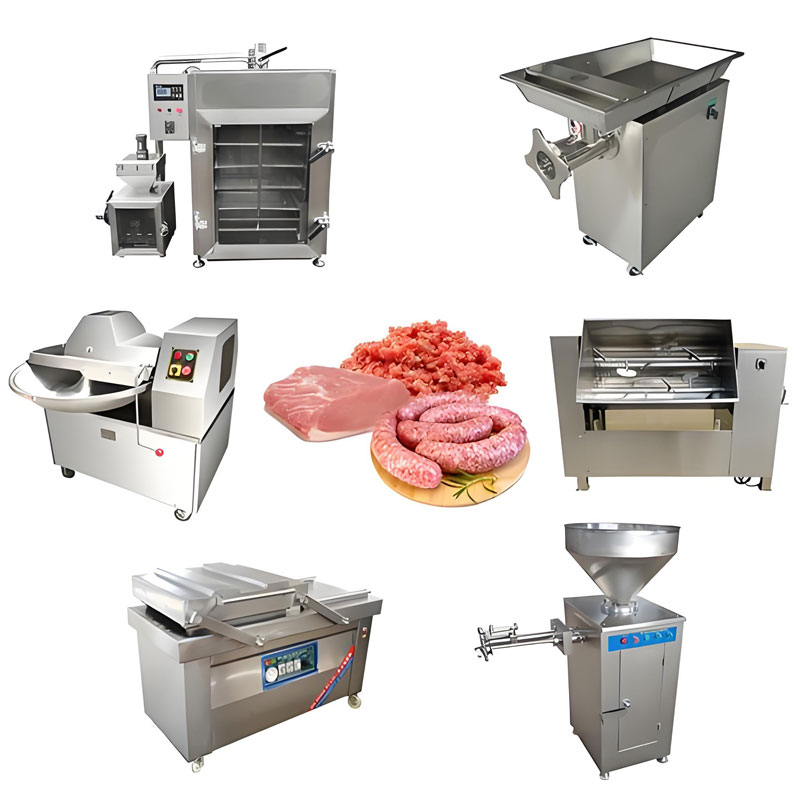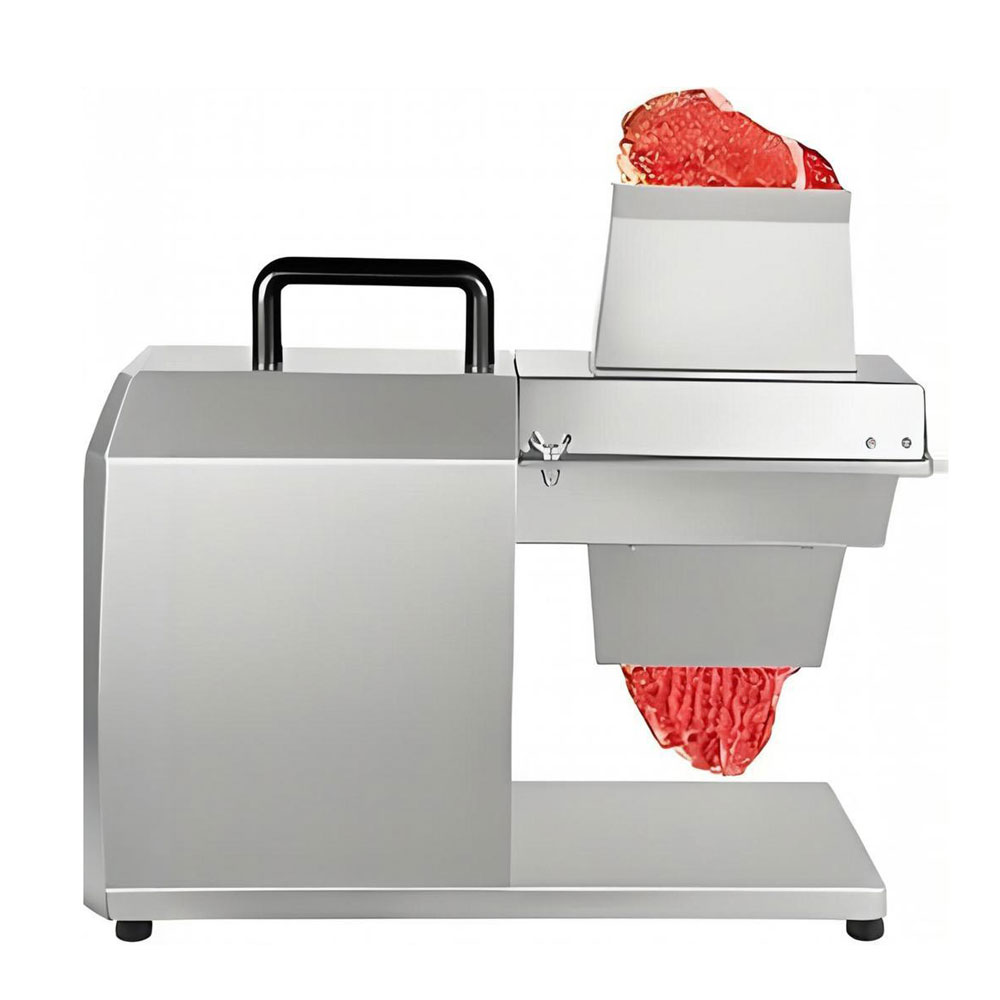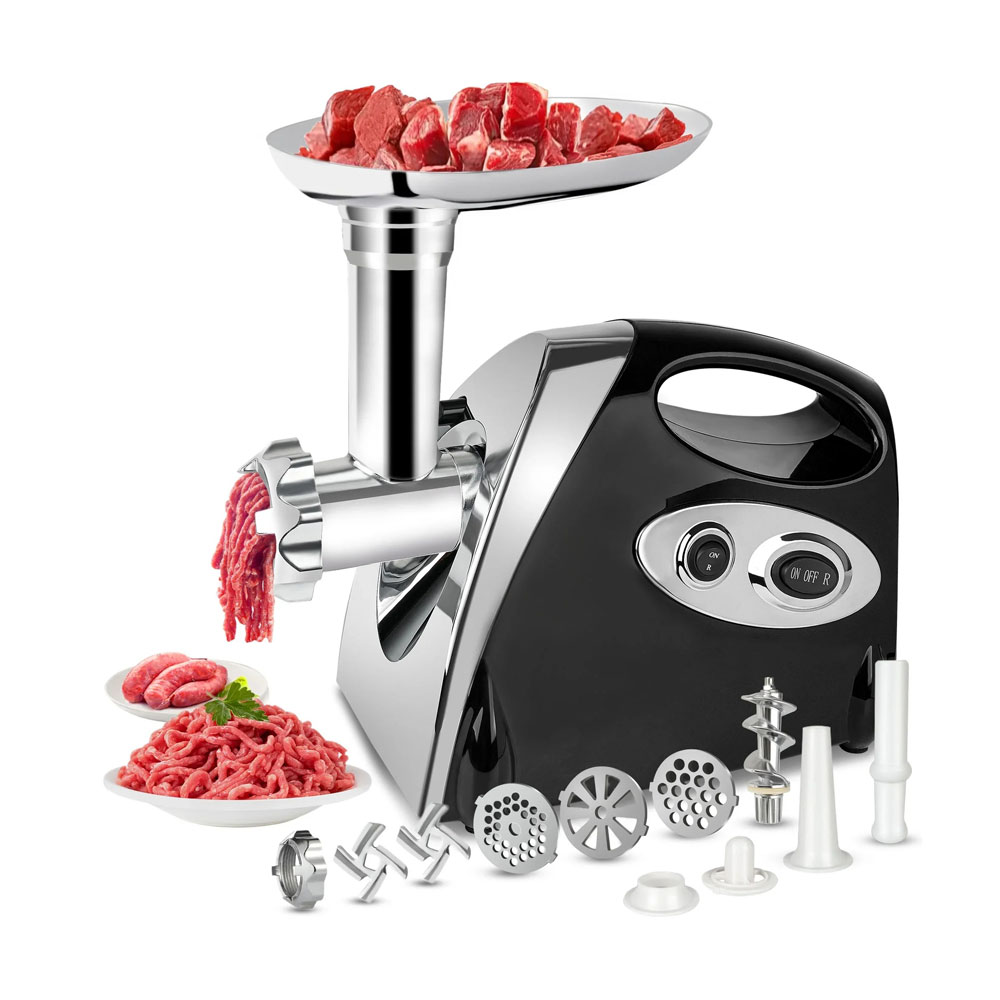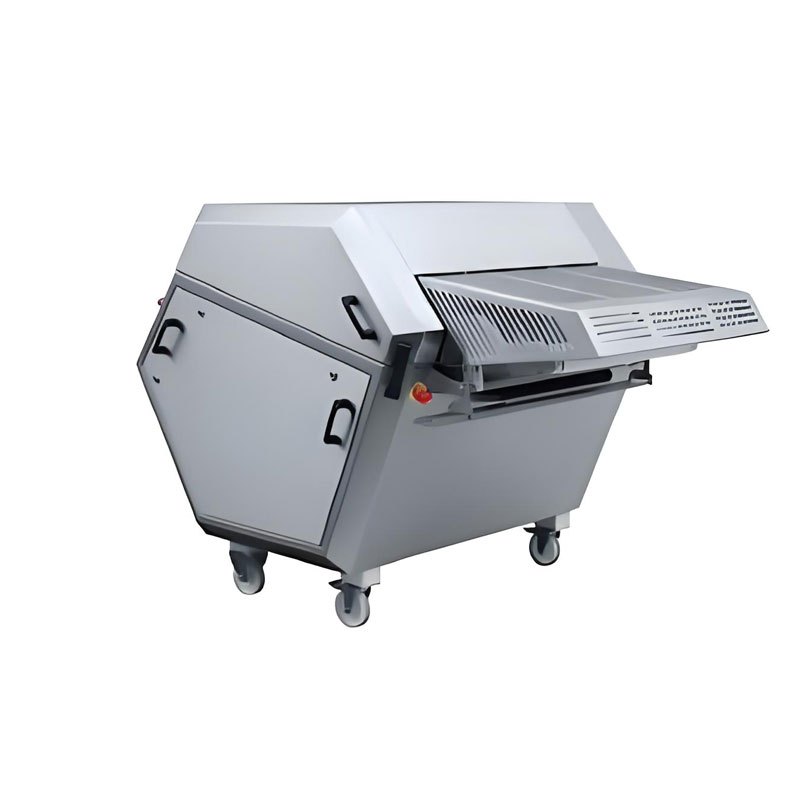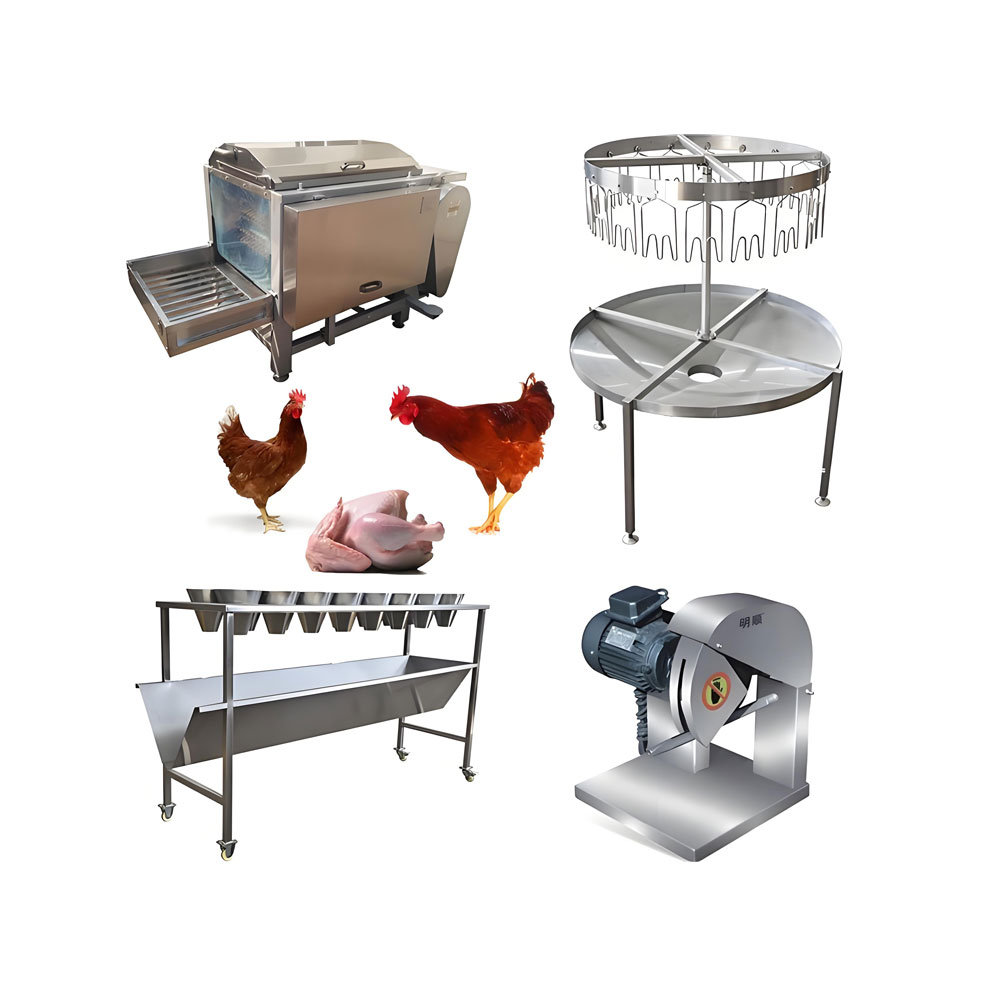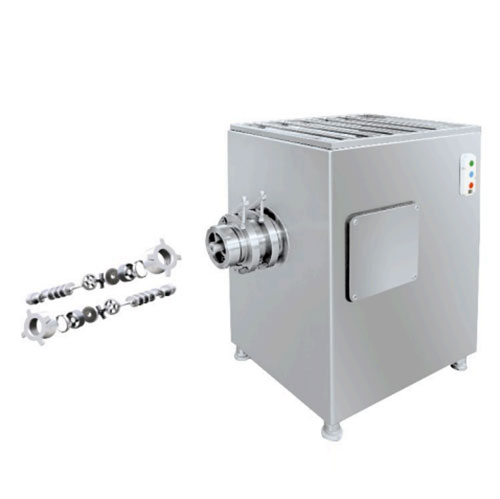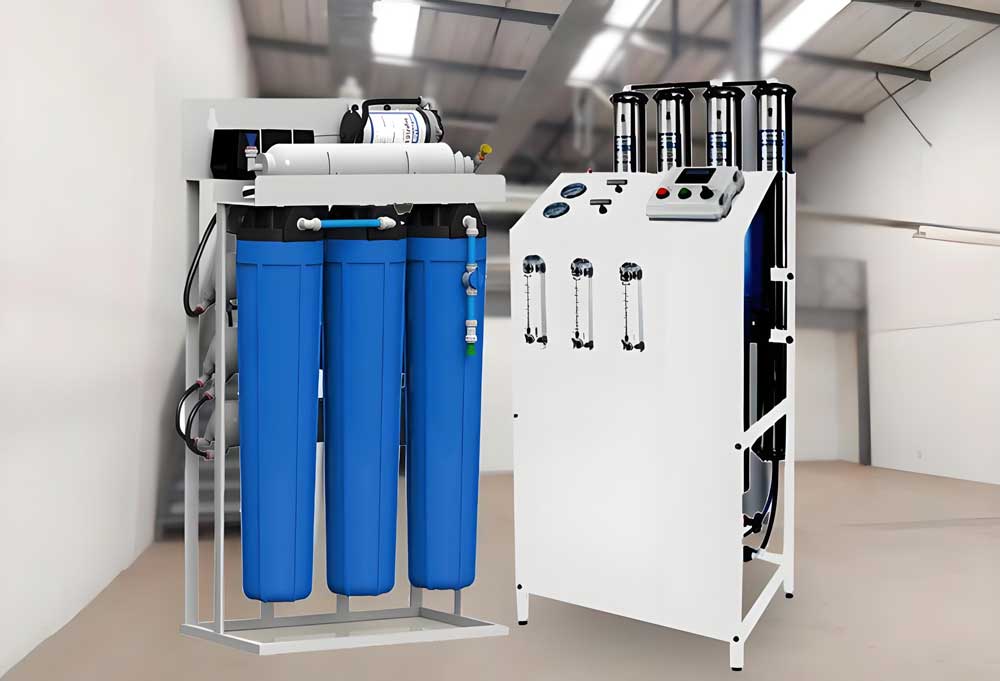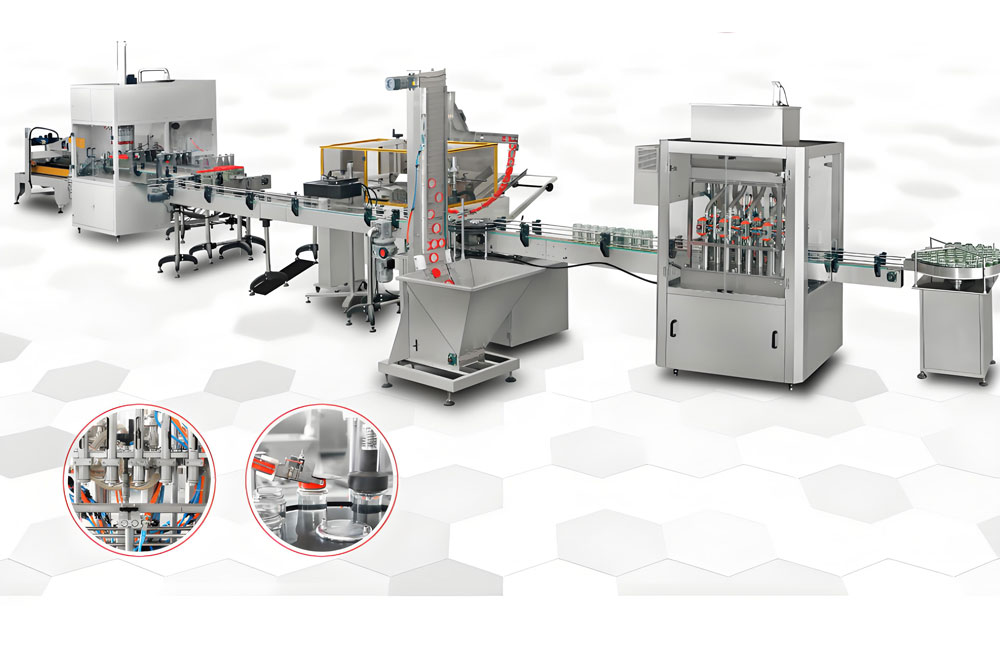
Meat processing equipment is a critical part of any meat production facility, ensuring efficient and hygienic processing of various types of meat. These machines come in different sizes and capacities, ranging from compact units for small-scale operations to large, industrial-grade machines for high-volume production.
The equipment is available in various forms, such as meat grinders, slicers, and mixers, each with specific functions. Meat grinders typically come in multiple capacities to meet diverse processing needs, from fine grinding for sausages to coarse grinding for burgers. The slicers are designed with adjustable thickness settings, ranging from 1mm to 10mm, allowing for precise slicing of meats to meet specific product requirements.
To enhance functionality and longevity, many meat processing machines feature stainless steel construction, which is corrosion-resistant and easy to clean, ensuring both durability and hygiene. Some models are equipped with removable parts for easy maintenance and cleaning, reducing downtime in production lines.
An essential component of modern meat processing equipment is the digital control panel, offering automated operation and precision in settings such as temperature, speed, and timing. This technology enhances production efficiency and consistency in product quality, meeting the needs of high-demand meat processing plants.
Additionally, the equipment often incorporates safety features such as interlocking systems and emergency stop buttons, ensuring operator safety while handling sharp blades or high-powered machinery.
To improve user experience, noise reduction systems and vibration damping technologies are integrated into high-end models, providing a quieter and more comfortable working environment.
The visual appeal of the machines is enhanced by sleek, modern designs, which not only improve functionality but also contribute to the overall professional aesthetic of meat processing facilities. This combination of advanced features and thoughtful design makes modern meat processing equipment indispensable in today's meat production industry.
Automatic Meat Processing Equipment
What is Automatic Meat Processing Equipment?
Automatic meat processing equipment refers to machines and systems that utilize advanced technology and mechanized processes to automate tasks such as cutting, grinding, marinating, and packaging meat. This equipment is widely used in large-scale meat processing plants to enhance production efficiency, reduce labor costs, and ensure food safety.
Advantages of Automatic Meat Processing Equipment:
-
Increased Production Efficiency: Automated equipment can operate continuously, significantly boosting production speed to meet high-volume demands. For instance, automated cutting machines can process large quantities of meat in a short period, far exceeding manual operations.
-
Reduced Human Error: Automation improves operational consistency, lowering the risk of quality fluctuations caused by human mistakes, thereby ensuring stable product quality.
-
Optimized Resource Utilization: Many automated systems are equipped with smart monitoring technology that tracks production data in real time, optimizing the use of raw materials and resources, reducing waste, and enhancing overall efficiency.
-
Enhanced Food Safety: Modern automated equipment is designed to meet food safety standards, making it easy to clean and disinfect, thus minimizing the risk of cross-contamination and ensuring the hygiene and safety of the products.
Considerations When Purchasing Automatic Meat Processing Equipment
-
Equipment Performance and Specifications: Choose the right type and specifications of equipment based on production needs to ensure its performance meets the requirements of the production line. Different equipment varies in capacity and processing capabilities, so careful evaluation is essential.
-
Technical Support and Service: When selecting a supplier, consider the technical support and after-sales service they provide. Ensure that you can quickly receive repairs and technical guidance if issues arise, minimizing downtime.
-
System Compatibility: Ensure that newly purchased automated equipment can integrate with existing production systems to avoid production delays or additional costs due to equipment mismatches.
-
Budget and Return on Investment: The cost of automated equipment is typically higher, so it should be evaluated in the context of the company's financial situation. Additionally, consider the long-term benefits it brings to ensure the reasonableness of the investment return.
Types of Meat Processing Equipment
Meat Grinders
Essential tools for breaking down large cuts of meat into finely ground forms. Suitable for small-scale operations and industrial production lines.
Common Applications
Used for creating ground beef, sausages, and patties. Adjustable grinding plates offer flexibility in production.
Benefits
- Efficiency: Streamlines meat breakdown process
- Versatility: Accommodates various meat types
- Hygiene: Easy-to-clean stainless steel construction
Slicers
Crucial for cutting precise portions of meat with adjustable thickness settings, ensuring product uniformity.
Key Features
- Adjustable Settings: 1mm to 10mm thickness range
- Safety Mechanisms: Built-in locks and guards
Benefits
- Precision: Uniform slices for packaging and presentation
- Speed: Faster than manual slicing for large quantities
Meat Mixers
Designed to blend ingredients with ground meat, ensuring uniform distribution of spices and additives.
Advantages
- Consistency: Uniform flavor and texture
- Large Capacity: Increased productivity for industrial models
Sausage Stuffers
Specialized machines for filling casings with ground meat mixtures, available in manual and automated versions.
Applications
- Sausage Production: Various types from breakfast links to bratwurst
Advantages
- Efficiency: Quick and uniform casing filling
- Customization: Adjustable nozzles for different sizes
Smokers
Used to enhance flavor and preservation through controlled smoke exposure. Available in electric, gas, or wood-fired options.
Benefits
- Enhanced Flavor: Distinctive flavor profile
- Preservation: Extended shelf life
Vacuum Packaging Machines
Provide airtight seals to preserve freshness and extend product shelf life. Range from small units to fully automated systems.
Key Features
- Sealing Mechanism: Air removal to reduce spoilage risk
Advantages
- Extended Shelf Life: Improved distribution timelines
- Hygiene: Reduced contamination risk
Types of Meat Processing Equipment by Scale
Small-Scale Meat Processing Equipment
Small-scale meat processing equipment is typically used in small businesses or home setups. These machines are often made of food-grade stainless steel, ensuring hygiene and ease of cleaning. Typical machines include meat grinders, slicers, and small mixers.
These machines usually have simpler construction and use motors between 0.5 kW to 1.5 kW. The blades and cutting components are generally made of high-carbon steel for durability, and the structure is compact for easy storage and mobility.
Price: $500 - $3,000
Cost-Effectiveness: Ideal for small businesses, these machines offer high ROI with low upfront costs and are sufficient for limited production volumes.
Medium-Scale Meat Processing Equipment
Medium-scale equipment is designed for small to mid-sized food processing facilities. These machines are built with larger motors, typically ranging from 1.5 kW to 3 kW, and feature advanced control settings for multiple processing options, such as varying grind sizes or mixing speeds.
Made from high-quality stainless steel and equipped with wear-resistant cutting blades, these machines are durable and capable of processing larger quantities of meat. Some models also come with semi-automated functions to reduce labor requirements.
Price: $3,000 - $15,000
Cost-Effectiveness: A good balance of price and productivity, suitable for growing businesses that require more processing capacity without investing in full industrial-scale equipment.
Large-Scale Meat Processing Equipment
Large-scale meat processing equipment is used in industrial settings, such as large meat processing plants. These machines are typically equipped with powerful motors exceeding 3 kW, ensuring high throughput. Machines include heavy-duty grinders, slicers, automated portioners, and large mixers.
The equipment is built from 304 or 316 stainless steel, ensuring long-term durability and compliance with food safety regulations. These machines often come with fully automated systems, including automatic feeding and portioning, reducing manual labor and increasing efficiency.
Price: $15,000 - $100,000+
Cost-Effectiveness: Though more expensive, these machines offer the highest efficiency for large-scale operations, with quick ROI due to increased production capacity and automation.
Meat Processing Equipment Repair and Maintenance
Daily Cleaning: Clean the equipment immediately after use, especially parts that come into direct contact with meat, such as blades, cutting boards, and hoppers. Use warm water and appropriate cleaners to remove any residual meat and fat.
Deep Cleaning: Perform a thorough cleaning weekly or monthly. Disassemble and clean all removable parts, ensuring that all crevices and hard-to-reach areas are properly cleaned.
Daily Cleaning: Clean the equipment immediately after use, especially parts that come into direct contact with meat, such as blades, cutting boards, and hoppers. Use warm water and appropriate cleaners to remove any residual meat and fat.
Deep Cleaning: Perform a thorough cleaning weekly or monthly. Disassemble and clean all removable parts, ensuring that all crevices and hard-to-reach areas are properly cleaned.
Cables and Connections: Regularly inspect the equipment’s cables and connections to ensure there are no signs of wear or damage. Loose connections can lead to equipment malfunction or safety hazards.
Control Panel: Check the control panel and switches regularly to ensure they are functioning properly. Address any operational anomalies promptly.
Calibration: Regularly calibrate the equipment according to the manufacturer’s guidelines to ensure accuracy and consistency. For cutting equipment, check and adjust cutting thickness and speed as needed.
Adjustment: Make necessary adjustments based on actual usage to ensure optimal performance and efficiency of the equipment.
Maintenance Records: Keep detailed records of each maintenance and repair activity, including cleaning, lubrication, and part replacement. This helps track the equipment’s maintenance history and predict future maintenance needs.
Training: Ensure all operators are properly trained on the correct use and basic troubleshooting of the equipment. Good operational practices can reduce equipment wear and failure rates.
Manuals: Read and follow the maintenance manuals and operational guidelines provided by the manufacturer. Manufacturer’s recommendations typically include best practices and important considerations for equipment maintenance.
Honest Reviews From Customers

"The meat grinder we purchased from Yuanlin Food Equipment has been a game changer for our processing facility. The grinder is incredibly easy to clean and maintain, which is a huge time-saver for us. What really stands out is the consistency of the grind—it’s perfect every time, whether we’re processing large quantities of beef or pork. We’ve seen a noticeable improvement in our production efficiency, and the machine’s sturdy construction gives us confidence that it will last for many years to come. We highly recommend this product for any business looking to upgrade their equipment."

"Yuanlin’s meat dicer is truly exceptional. We’ve been using it for about six months in our food production facility, and it has not only met but exceeded our expectations. The dicer handles large volumes of meat with ease, and the precision it offers is simply unbeatable. The product has helped us streamline our processes, reduce waste, and increase our production speed. It’s also very easy to use, which has been great for training our staff. The machine is durable and built to last, and we’re extremely satisfied with the overall performance."

"We’ve been operating a high-demand meat processing plant for years, and Yuanlin’s frozen meat slicer has become an invaluable part of our operations. The slicer is fast, efficient, and incredibly reliable, even when processing frozen cuts of meat. The machine’s design is also impressive—it's easy to clean and maintain, which saves us a lot of time. We can now meet higher demand without compromising on quality. The customer service team was very responsive and helped us find the perfect machine for our needs. Highly recommended for anyone in the food processing industry."

"I cannot praise Yuanlin Food Equipment enough for their exceptional products. We’ve been using their industrial-grade meat grinders and have seen a tremendous boost in our productivity. The grinders handle large batches with ease, and the grind quality remains consistent, which is critical for our operations. The build quality is outstanding, with the stainless steel design making it not only durable but also incredibly hygienic. The customer service has been top-notch from day one, providing quick responses to any queries we had. We look forward to doing more business with them in the future."
Must-Read Blogs For Boss
Frequently Asked Questions
Our equipment uses high-quality materials and advanced manufacturing technology to ensure stable performance and long service life. We have strict quality control standards.
Yes, our equipment complies with the strict hygiene standards and regulations in the food processing industry. We use stainless steel materials and thorough sanitary design to ensure the safety of your food.
We provide 12 months warranty and lifetime maintenance support. We have a quick-response technical team to address issues promptly. Spare parts are always in stock.
We provide comprehensive after-sales service and technical support. Our team is available to assist you at all times and can quickly respond to any maintenance or repair needs.
Delivery takes 2-4 weeks after down payment. Our engineer will be onsite for installation and commissioning within a week.
Yes, we will provide comprehensive training to your staff on how to operate, clean and maintain the equipment.
Our equipment incorporates energy-saving technology to minimize energy consumption to the fullest extent. This helps reduce production costs and is environmentally friendly.
Yes, we can customize the equipment to match your production process and requirements. We have extensive experience in meeting various customization needs.


